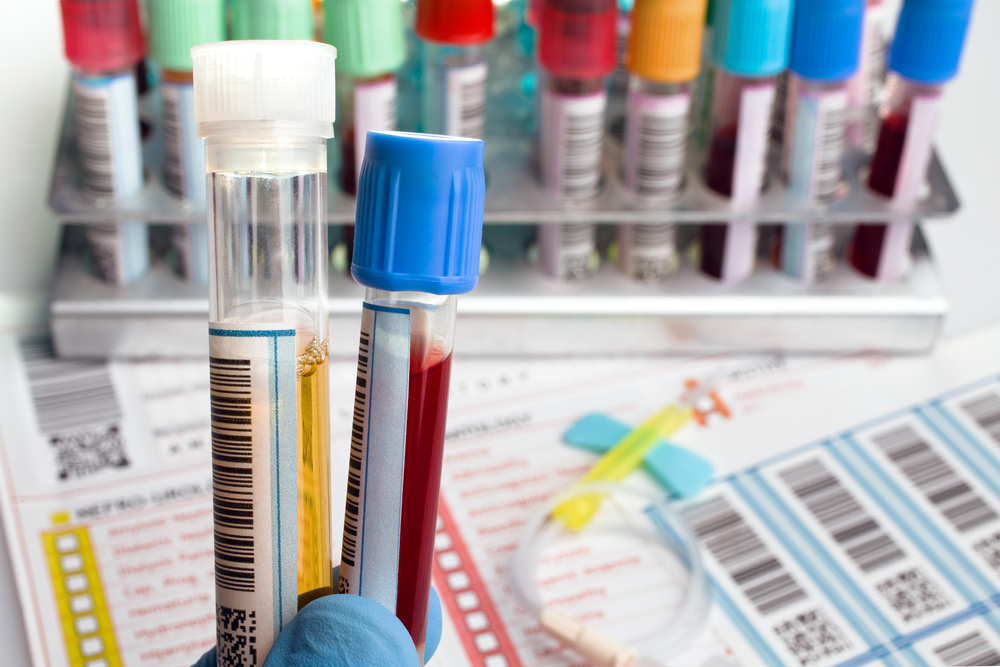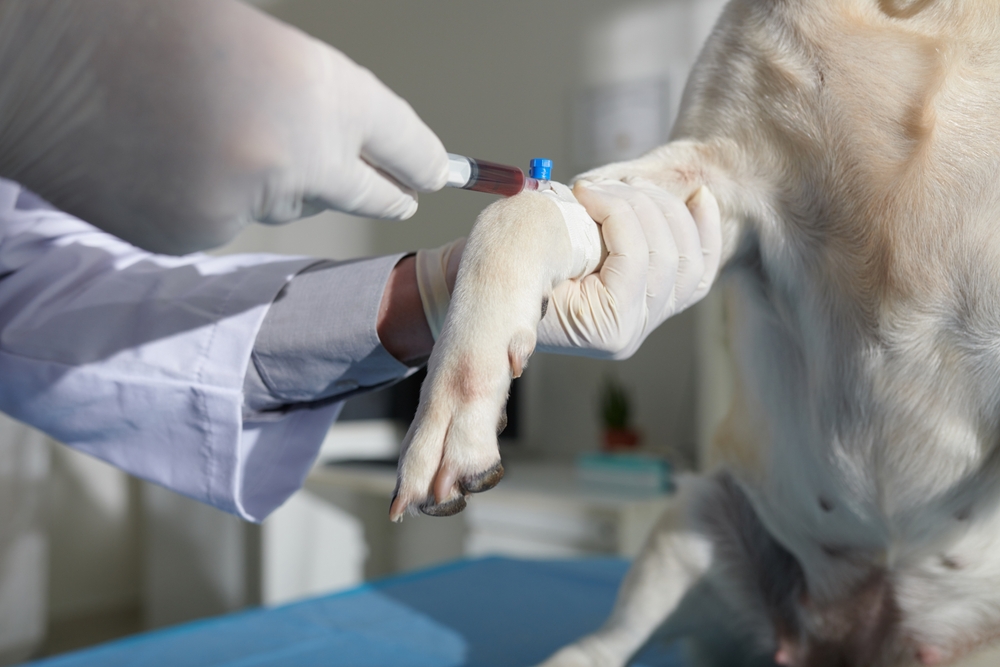When our Twin Maples Veterinary Hospital team sees your pet, whether for a wellness visit or a sick patient exam, we will likely recommend blood work. We commonly use blood panels to evaluate your pet’s health and to determine why they are ill. However, when you review your pet’s blood work results, the meaning of all those unfamiliar clinical abbreviations and numbers may confuse you. Don’t worry—a veterinary degree is not required to understand your pet’s blood work results, because our team will review the results with you, and explain why we may recommend additional testing. Our Twin Maples Veterinary Hospital veterinarians are always available to review your pets’ testing and results with you.
What does my pet’s CBC mean?
A complete blood count (CBC) is one-half of pets’ most common blood tests, and evaluates your pet’s blood components—red blood cells (RBCs), white blood cells (WBCs), and platelets (PLTs)—for anemia, dehydration, infection, clotting ability, and the immune system’s status. Some of the CBC’s most important findings include:
- RBCs — RBC level changes indicate hydration status and anemia.
- WBCs — Stress, infection, inflammation, leukemia, and bone marrow issues can affect WBCs.
- NEUs —Neutrophils are inflammatory cells.
- LYMPHs — Lymphocytes are immune cells that can increase with chronic infection.
- MONOs — Monocytes are inflammatory cells associated with tissue repair.
- EOSs — Eosinophils are inflammatory cells that may indicate hypersensitivity, allergies, and parasites.
- BASOs — Basophils are inflammatory cells that may indicate hypersensitivity, allergies, and parasites.
- PLTs — PLTs allow the blood to clot and stop bleeding.
- HCT — The hematocrit level indicates the percentage of red blood cells in a blood sample, and is helpful for diagnosing dehydration or anemia.
What does my pet’s blood chemistry profile mean?
A comprehensive blood chemistry profile assesses your pet’s overall organ function, evaluating their kidneys, liver, and pancreas, and measuring the electrolyte and protein levels in your pet’s blood. Some blood chemistry profiles focus on specific organs. Common blood chemistry profile results abbreviations include:
- BUN — Blood urea nitrogen measures the kidneys’ ability to filter and remove urea, the body’s waste product. An elevated BUN can indicate kidney disease or dehydration.
- CRE — Creatinine is another bodily waste product that the kidneys filter and remove. An elevated CRE can indicate kidney disease.
- ALT — Alanine aminotransferase can indicate liver disease, but cannot identify the cause.
- ALP — Alkaline phosphatase may be elevated in pets with liver disease or Cushing’s disease, or in young, still-growing pets.
- TBIL — Total bilirubin indicates liver problems or anemia.
- AMYL and LIP — Amylase and lipase are two pancreatic enzymes that may be elevated in pets with pancreatitis and other conditions.
- TP — Total protein is the amount of the blood’s protein, and assesses your pet’s hydration status.
- GLU — Glucose indicates your pet’s blood sugar level, and an elevated blood glucose can indicate diabetes.
A complete blood chemistry profile measures various electrolytes, such as sodium, potassium, and chloride, to evaluate the body’s ability to maintain fluid balances, clot blood (i.e., stop bleeding), and perform nervous and muscle system functions. Additional testing can help zoom in on a particular diagnosis or disease process.
Why would my pet need blood work?

Blood work is a vital diagnostic tool that helps our veterinarians evaluate your pet’s health, and when paired with a physical exam, we can form a complete picture of how your pet’s body is functioning, and pinpoint their condition’s cause. We may recommend that your pet have blood drawn in the following instances:
- Baseline establishment — Throughout your pet’s life, routine blood panels such as a CBC and chemistry profile establish a baseline of normal values. Over time, we determine your pet’s normal, which will serve us better in identifying subtle abnormalities.
- Early detection screening — As your pet grows older, those routine wellness visit blood panels can help us detect a health issue in the early stages, when the disease can be more easily treated, providing your pet a better quality of life for longer. Comparing up-to-date blood work results with several years’ previous results helps us spot a problem much sooner than a physical exam alone. Pets can hide disease processes for a long time before signs become evident.
- Pre-anesthetic testing — When your pet undergoes anesthesia, their body must metabolize anesthetic agents, tolerate blood pressure and temperature decreases, and face other challenges. Pre-anesthetic blood work ensures your pet is healthy enough to undergo anesthesia, and we can then design a customized anesthetic protocol to help minimize and prepare for potential problems.
- Therapeutic drug monitoring — Therapeutic medications help maintain pets’ quality of life when they are diagnosed with chronic health conditions such as diabetes, thyroid disease, heart disease, kidney failure, and osteoarthritis. However, some of these medications have a narrow therapeutic range, and your pet can have an adverse reaction if they receive too much or too little. Your veterinarian will want to routinely monitor your pet’s therapeutic drug levels to ensure their medication doses are on the right track.









Leave A Comment